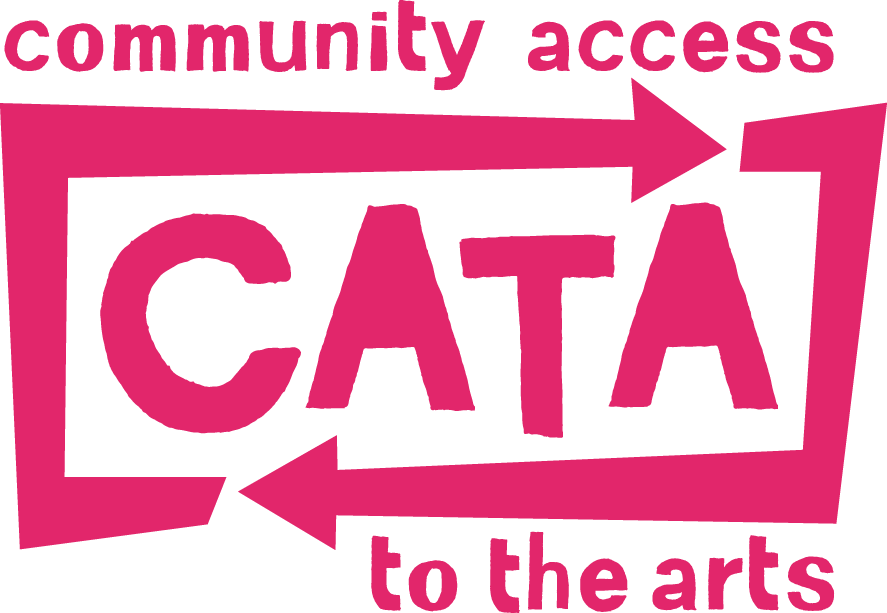04 Jun CATA is a Lifeline for Artists like Teresa

For 30 years, Teresa has tapped into her creativity in CATA workshops.
Teresa Thomas has expressed her creativity at CATA since the organization’s early days. “Teresa always knew she was an actress and dancer,” says June Thomas, her mother. “She’s a show-person. She loves to be on stage.”
“I always felt that people needed to see what people like Teresa can do. If it weren’t for CATA, I don’t know if any of that would have happened.”
Teresa’s first workshops with CATA were in her classroom at Monument Mountain High School— only a few years after dance therapist Sandy Newman founded CATA in 1993. Now 30 years later, Teresa is joined by countless artists with disabilities who are discovering their talents as part of CATA’s dramatic expansion across our community.
Back in the 90’s, as Teresa got close to graduating, she wondered what would come next. “Your life doesn’t end when you graduate,” says June. “CATA was there for her. We called it ‘CATA College’ .”
Since then, Teresa has been involved in nearly every program CATA has offered. “She’s filled her whole life with CATA!” says June.

Teresa was a founding member of The Moving Company, CATA’s first performing arts ensemble, led by former CATA Artistic Director Dawn Lane.
Teresa’s CATA scrapbook, which she’s compiled since the beginning, holds a treasure trove of CATA moments: dance performances with The Moving Company, visits to nursing homes with CATA’s Art Cart, poetry readings, exhibits, and more.
From that scrapbook, one theme is clear— and that’s growth: Personal and creative growth for CATA artists like Teresa. And CATA’s own growth, deepening and expanding life-changing opportunities for people in our community.
“We’re now reaching 1,000 people with developmental and intellectual disabilities, autism, brain injuries, and dementia across 16 towns and cities,” says Margaret Keller, CATA Executive Director.

“Teresa is a show-person,” performing in every CATA performance at Shakespeare & Company.
“Our growth in local schools has been especially dramatic,” adds Margaret. “Since those early school workshops that Teresa took part in, we’ve grown to reach 300 students with special needs each year across eight school districts.”
All of that growth has been rooted in the needs of our community. “Partners and families are turning to us to create more opportunities for people with disabilities to build skills, explore their interests, and express themselves,” says Margaret.
Teresa is still active at CATA today, and continues to paint, act, and sing with friends and fellow artists in our studios.
“I like any art I’m doing,” says Teresa. “I like to be on stage and make people smile. I’m always meeting new people at CATA.”
“CATA has been Teresa’s lifeline,” says June. “She has so much confidence in herself and such strong self-esteem. She never doubted that she could do anything at CATA.”
“These years with CATA have meant the world to Teresa and our whole family. It brings me so much joy because she’s been so happy. All that she ever wanted or dreamed for herself, it’s happened— because of CATA.”

Teresa is still active at CATA today, shown here with CATA Program Director Jeff Gagnon and fellow artists Ali Flynn and Jessica Hansen.



You must be logged in to post a comment.